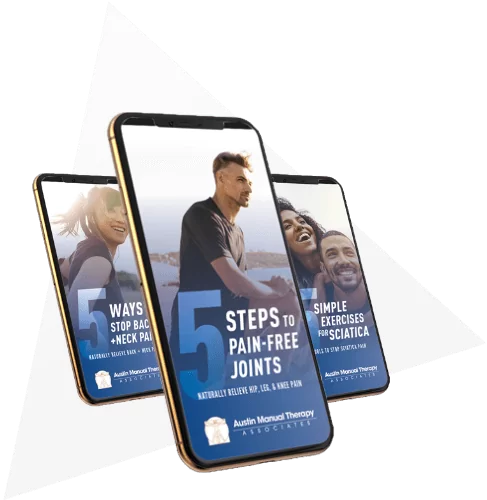Why you should ALWAYS choose physical therapy before surgery
The research is telling: physical therapy is the number one treatment option out there for rotator cuff related shoulder pain. It has been shown to be just as effective as surgery, at a fraction of the cost of surgery. These outcomes have been studied in the short-term (within a year) and in the very long-term (at 2, 4, 5 year follow ups) (Haahr et al 2005, 2006; Ketola et al 2009, 2013). In fact, exercise has been shown to reduce the need for shoulder surgery by up to 80%! (Holmgren et al 2012). Tendon tears in your shoulder relate more to your age than whether you have pain or not (Lewis et Al l 2018). Are rotator cuff tears just a normal part of the aging process, like wrinkles and arthritis? The research has yet to tell us that for sure, but it’s not a bad hypothesis. Let’s go into more detail as to why you should always choose PT before any other treatment out there for shoulder pain.
One of the many things I hear from my patients is this: “I’ve had shoulder pain for years, I went to the doctor and had an MRI, and it shows a tear in my rotator cuff. My doctor says I need surgery to fix it.” I want to talk about why this advice is flawed.
Imaging tells us very little about the condition of a shoulder, and even less about where the pain is coming from. Here’s why: there is a poor correlation between changes seen on imaging and shoulder symptoms (Lewis et al 2009, 2011, 2014, 2015, 2106, 2017). There have been multiple studies done that include people who have no shoulder pain and people that do. What they found was staggering: there was no significant difference in MRI or ultra-sound findings between the two groups. Meaning, people that had NO shoulder pain had visible findings on their MRI or ultrasound (including rotator cuff tears, subacromial bursal thickening, rotator cuff tendinopathy, and labral tears).
In one specific study, they took ultrasound scans of 51 men age 40-70. Here’s what they found: 78% had subacromial bursal thickenings, 65% had acromioclavicular joint degeneration, 39% had supraspinatus rotator cuff tendinopathy, and 22% had a tear in the rotator cuff. That means that 96% of these men had shoulder abnormalities, yet none of them were having pain (Girish et al 2011 AJR). In another study, MRI’s were taken of 14 professional baseball pitchers who had no shoulder pain. Results showed rotator cuff changes in 79% of the throwing shoulders and 86% of the non-throwing shoulders. The study also found that 79% had labral abnormalities in both the throwing shoulder and the non-throwing shoulder. Yet none of these pitchers had any pain, and they continued to function at an extremely high level (Miniaci et al 2002 AJSM). These are just two of the many studies out there that discuss how imaging is not a good tool to diagnose shoulder pain. Unfortunately, this means that many people will have unnecessary shoulder surgery on shoulder tissues that are NOT related to their symptoms. The bottom line: people should NOT be having surgery based on MRI or ultrasound findings.
Then why do people get better after having surgery? Your neighbor told you that his rotator cuff repair fixed his pain, so why wouldn’t it fix yours? Well, multiple studies have shown that improvement may be due to placebo, post-operative physical therapy, or simply, time (Lewis et al 2011, 2015, 2018). I’ll use one study as an example: 118 people were split into three groups. One group of 40 people had surgery for a labral repair, one group of 39 people had surgery for a biceps tendon, and the last group of 39 people had a sham surgery (just an incision that was then sutured up). At all follow-ups including two years down the road, the surgeries were no more effective than the sham surgery in pain ratings and patient satisfaction surveys (Schroder et al BJSM 2017).
If MRI/ultrasound findings don’t tell us anything about the source of the pain, then what is causing the pain? We believe it is simply an over-loading issue. Usually, the problem occurs when there is an excessive or rapid increase in load, beyond the tissue’s capacity, and that’s when pain occurs. For example, your ceiling fan broke and you had to hold a fan above your head for two hours, and you woke up the next morning with severe shoulder pain. Or you haven’t been working out for the last three months and you jump right back in to a CrossFit workout. These are two examples of over-load. Tissues (especially tendons) adapt to the stresses that are placed upon them, and that goes both ways: the less you load, the less your tissues can tolerate load, and the more you load, the more your tissues can tolerate load. What we do in physical therapy is increase your tolerance to load, so that you can handle lifting that gallon of milk, or that fan above your head, without subsequent pain.
So, when that patient who has a rotator cuff tear walks into my office before surgery, I breathe a sigh of relief, because I know they will most likely get better with conservative physical therapy and they will avoid an unnecessary shoulder surgery. These situations always make me think of those patients that didn’t get the chance to make it in my door. Don’t be one of those people. Advocate for yourself, understand the research, and always try conservative treatment first. Don’t hesitate to schedule an appointment with one of our expert physical therapists at (512) 832- 9411.
– Leeda Rasoulian, PT, DPT, FAAOMPT





